
Wondering how to leverage link building for SEO? It’s not just about getting any links; it’s about securing the right ones. In this guide, you’ll uncover the essential strategies that connect link building directly to improving your SEO performance. Plus, we’ll dive into emerging tactics that keep you ahead of the curve. Ready to link for success?
Table Of Contents
Key Takeaways
- Link building is pivotal for SEO, improving visibility, authority, and rankings; it requires a strategic approach to obtain quality backlinks from reputable sources.
- High-quality backlinks from authoritative sites are more valuable than a high quantity of poor ones, as they signal credibility and trustworthiness to search engines.
- Innovative link building strategies include content-driven link attraction and strategic guest blogging, with an emphasis on creating compelling content that naturally attracts backlinks.
What Is Link Building?

In the realm of SEO, link building refers to the strategic process of obtaining superior inbound links to enhance the search rankings of a web page. It’s akin to casting a fishing net into the vast ocean of the internet, with each link acting as a strong, durable thread of the net.
When other websites link to your site, they’re essentially vouching for your content, signaling to search engines that your page is worthy of ranking. Some key benefits of link building include:
- Increased visibility and exposure for your website
- Improved organic search rankings
- Increased referral traffic from other websites
- Enhanced credibility and authority in your industry
Implementing a solid link building strategy is crucial for the success of your website and its visibility in search engine results.
Link building is far from a haphazard endeavor. It involves a careful strategy to acquire backlinks, which are simply links pointing from other websites to your own. Think of it as a tactical game of chess, where you aim to draw the king (or in this case, the search engines) to your side of the board.
The more quality links you have pointing to your site, the more likely search engines are to regard your site as an authority, improving your search rankings and enhancing your visibility. A well-executed link building campaign can make all the difference in achieving these goals.
Why Is Link Building Important?
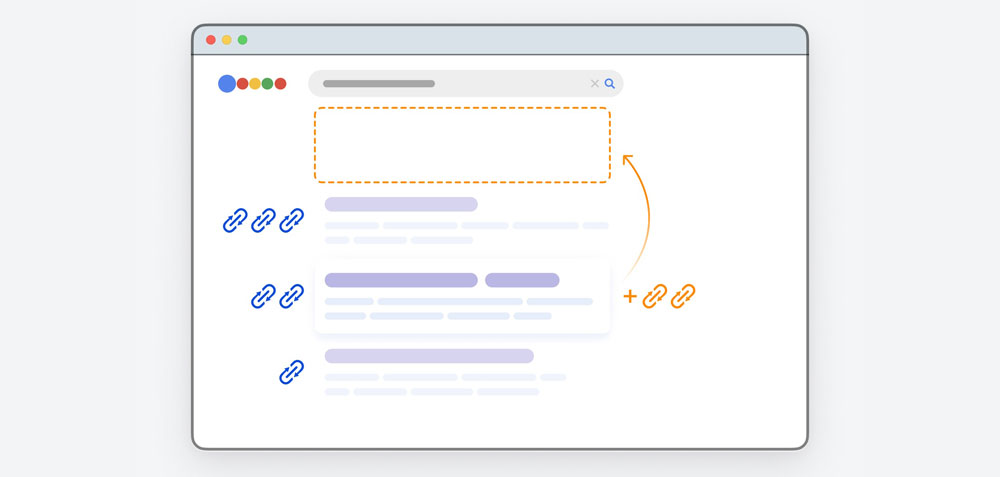
You may be questioning the significance of link building. Can’t a website simply rely on great content and a strong keyword strategy? While these elements are indeed crucial, they’re just pieces of the puzzle. Backlinks bridge the gap between isolated islands of content, creating a cohesive, interconnected network of information that search engines can easily navigate.
Backlinks serve as a form of endorsement that can significantly impact search engine rankings. Just as a compliment from a respected individual can boost your reputation, a backlink from an authoritative website signals credibility and trustworthiness to major search engines. But that’s not all.
Link building also plays a significant role in enhancing a site’s authority by elevating its domain authority, page authority and relevance. Add to this the fact that backlinks have a significant impact on organic traffic, and it’s clear that link building is a cornerstone of a solid SEO strategy.
How To Build Links

After underscoring the importance of link building, it’s time to tackle the execution. Building links involves a variety of strategies, all aimed at one goal: acquiring high-quality backlinks. One such strategy is guest blogging.
This involves carefully selecting where to pitch, creating a compelling pitch, and producing valuable, high-quality content for the audience. It’s like being a guest speaker at a seminar; you get to share your knowledge with a new audience, and in return, you earn a backlink to your website.
Another effective strategy is broken link building. This involves leveraging broken links to acquire backlinks. Imagine walking into a bookstore and finding a book with a promising title, only to realise some pages are missing. That’s how a user feels when they click on a broken link.
In this strategy, you step in as the hero, offering a replacement for the missing pages (broken links) with your own relevant content. It’s a win-win situation. You acquire a backlink, and the website owner improves their user experience.
Link building is a multifaceted endeavor that typically involves one of the following three approaches:
Requesting Links
This method entails reaching out to other websites with the request to include a link to your content. This could be for:
- Insightful blog posts
- Comprehensive guides
- Informative ebooks
- Engaging visual content such as infographics
- Detailed case studies
- Unique research findings and data
Tools like Semrush’s Link Building Tool can help streamline the process of finding potential link partners.
Placing Links
Placing links is a proactive tactic where you go to another website and manually insert your link. This can be done on:
- Your social media profiles
- Online business directories
- Online forums, communities and Q&A platforms like Quora
- Blog comment sections
- User-generated profile pages
It’s important to note that this approach, while straightforward, may not be the most effective for link building. Such links are often sourced from less authoritative sites and thus may not carry much weight with Google, as they can be seen as self-promotional rather than earned endorsements.
Although these links are unlikely to harm your SEO, they also don’t contribute significantly to it. The ideal strategy is to focus on acquiring links naturally.
Earning Links
Earning links is the gold standard of link building, where other sites link to yours without any solicitation on your part. The most effective way to earn links is by crafting content of such quality that others feel compelled to link to it as a valuable resource or for further reading.
Content that typically attracts links includes:
- Visually compelling assets like infographics, charts and diagrams
- Original research and statistical data
- Interactive online tools and calculators
- Extensive guides and educational tutorials
To generate additional content ideas, it’s useful to analyse the backlink profiles of your competitors.
What Constitutes A High-Quality Backlink?
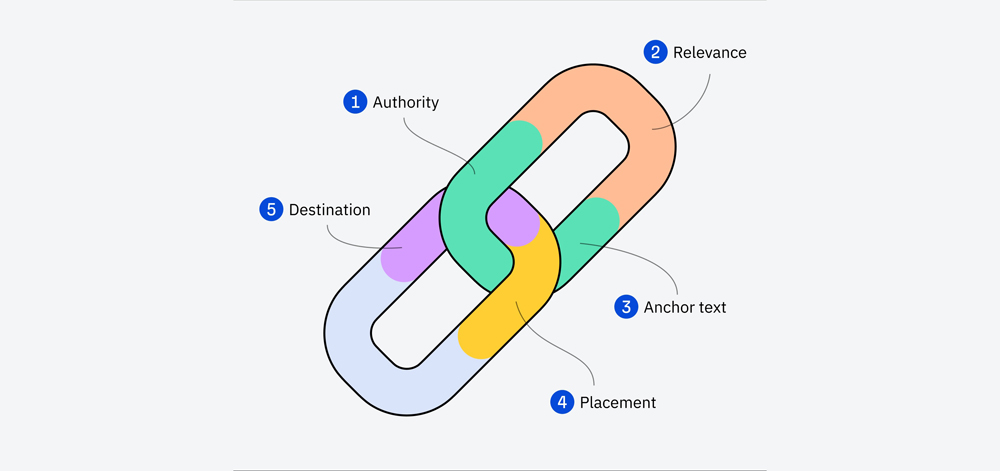
Understanding the elements that contribute to the strength of a backlink is essential for any effective SEO strategy. Next, we delve into the characteristics of a solid backlink. Not all backlinks are created equal. Just as it’s better to have a few true friends than a crowd of acquaintances, it’s more beneficial to have high-quality backlinks from authoritative, relevant websites than a bunch of low-quality ones.
When a website receives backlinks from authoritative and relevant sources, it signals credibility and trustworthiness to major search engines. Another crucial factor that makes a good backlink is descriptive anchor text. This plays a crucial role in providing context and aiding users and search engines in comprehending the significance of the link.
And let’s not forget the importance of incorporating backlinks within the main content of a page. These links hold great significance as they demonstrate the website’s authority to search engines and can have a positive effect on its SEO.
Here we explore the key factors that distinguish a good backlink from a mediocre one.
The Significance Of Authority
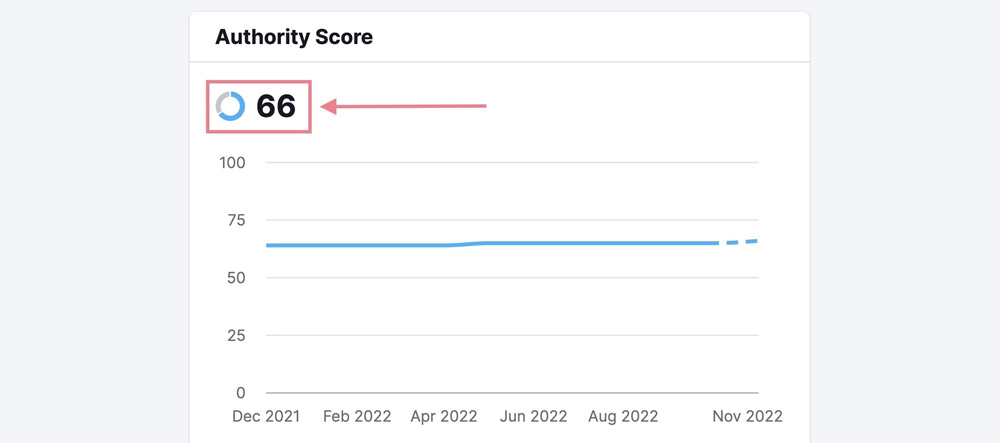
In the SEO world, “Authority” signifies the prestige and trustworthiness of a website or a specific webpage. Websites with high authority are considered more influential, and thus their backlinks carry more significance in search engine algorithms.
A backlink from such a site, like The Wall Street Journal, for instance, can be a powerful catalyst for boosting your page’s search engine ranking, far more than a link from a relatively obscure blog.
The Importance Of Relevance
Relevance is another cornerstone of a valuable backlink. Google’s search algorithms are designed to assess the relevance of content to a user’s search query, and this includes evaluating the context provided by backlinks from other prominent websites.
For optimal SEO impact, it’s crucial to seek backlinks from sites that align closely with your own niche or industry. For example, a backlink from a well-regarded SEO or marketing website is far more advantageous for an SEO consultancy than one from a site focused on an unrelated topic like yoga.
Strategic Link Placement
The location of a backlink on a webpage is not just a matter of chance, it’s a strategic element that can affect the link’s value. Google’s algorithms consider the likelihood of a link being clicked based on its placement, with links higher on the page generally seen as more authoritative.
Therefore, a prime backlink is one that is situated within the main content of a page rather than in less prominent locations such as sidebars, footers or buried deep within the text.
The Role Of Anchor Text
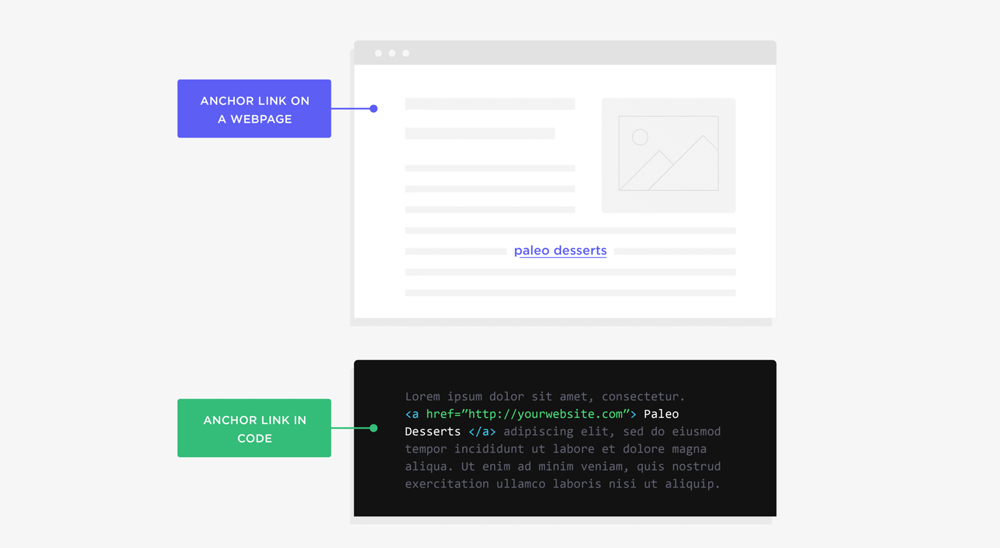
Anchor text—the visible, clickable words used in a hyperlink—serves as a signal to both users and search engines about the content of the linked page. Effective anchor text is descriptive and specific, offering a clear indication of what to expect upon clicking the link.
For instance, “how to store coffee” as anchor text clearly conveys to Google that the subsequent page provides information on coffee storage, whereas vague anchor text like “click here” offers little to no context.
Understanding Nofollow vs. Follow Links
The “nofollow” attribute in a hyperlink instructs search engines not to follow the link or pass on its authority, typically used when a site links to another without wanting to endorse it. While nofollow links generally do not contribute to search ranking authority, they can still play a role in brand exposure and driving referral traffic. Example of a nofollow link: html <a href=”https://example.com” rel=”nofollow”>Anchor Text</a>
On the other hand, follow links, which are standard hyperlinks without special attributes, can suggest endorsement and pass on ranking benefits. Site owners also have the option to use “rel=’sponsored'” for paid links and “rel=’ugc'” for links in user-generated content. Google views all these attributes as signals that inform their interpretation of links.
Understanding The Role Of Link Building In SEO
With a clearer understanding of link building’s complexities, we can probe into its role in Search Engine Optimisation. Link building is not an isolated process but a crucial piece of the larger SEO puzzle.
The Essence Of Link Building
In the realm of SEO, link building parallels real-world networking. Both are about establishing connections that boost your reputation and visibility.
In the digital landscape, link building plays a crucial role in enhancing SEO by elevating a webpage’s search rankings through the acquisition of high-quality inbound links and the augmentation of page authority.
But link building goes beyond improving search rankings. It’s also about establishing online authority. Much like an expert speaker at a conference who draws a crowd, a website with quality backlinks attracts a larger audience in the digital world.
This not only signals to search engines the website’s reliability but also helps elevate the perceived expertise and trustworthiness of the website. And this increased authority and credibility translate into improved visibility in search engines, thereby driving more traffic to the website.
Search Engines’ Perspective
Through the lens of a search engine, link building stands as a critical factor in assessing a website’s authority, relevance, and trust. Imagine a librarian trying to decide which books to recommend to readers. They would likely choose books that are widely cited by other authors and experts in the field. Similarly, search engines view backlinks as endorsements and use them to rank websites.
However, not all backlinks are treated equally by search engines. For example, Google views the nofollow link attribute as a ‘hint’ and may incorporate nofollow links into its ranking signals, while other search engines may have different approaches. This highlights the importance of understanding different search engine algorithms and adapting your link building strategy accordingly.
Crafting A Solid Link Building Foundation

Establishing a robust link building foundation parallels the construction of a resilient structure. You need a strong base to support the structure. In link building, this base comprises identifying link targets and conducting keyword research.
Identifying Your Link Targets
Identifying link targets is similar to selecting the right audience for a marketing campaign. It’s an essential first step in building a link foundation, contributing to:
- Generating more backlinks to the website
- Enhancing the page’s authority and trustworthiness
- Bolstering the website’s credibility and ranking on search engine results pages.
To effectively identify link targets, it is advisable to evaluate link sources, conduct a comprehensive site audit to identify existing internal links and utilise techniques for finding link targets. It’s about finding the ‘right’ websites to link to your site, much like finding the right influencers to promote your brand.
Keyword Research For Link Acquisition
The other pillar of a strong link building foundation is keyword research. Just as a miner needs a map to find gold, you need keyword research to uncover link building opportunities. Keyword research plays a crucial role in establishing a strong foundation for link building by guiding the development of an online marketing strategy that resonates with the audience’s interests and requirements.
To conduct keyword research for link acquisition, it is recommended to utilise website analytics software such as Google Analytics or HubSpot’s Sources report. This will enable the identification and analysis of the specific words and phrases that individuals use to search for information online.
By understanding and targeting these keywords, you can create content that attracts high-quality backlinks and improves your search results.
High-Quality Links vs Quantity: What Matters More?
The link building realm is rife with the ongoing quality versus quantity debate. Some argue that the more backlinks, the better, while others contend that the quality of backlinks matters more than the quantity. So, which side of the debate holds the truth?
In the grand scheme of things, quality trumps quantity. High-quality backlinks from authoritative, relevant websites are more important than the sheer quantity of backlinks for improving your website’s search engine rankings.
Think of it this way: a single recommendation from an industry expert is worth more than numerous endorsements from unknown sources. The same principle applies to backlinks. High-quality backlinks are perceived by search engines as an endorsement, leading to a notable enhancement of your site’s domain authority.
Innovative Link Building Strategies

With the evolution of the digital landscape, link building strategies are also transforming. Staying ahead of the curve requires the adoption of innovative approaches.
Let’s explore two such strategies that are shaping the future of link building: content-driven link attraction and strategic guest blogging.
Content-Driven Link Attraction
Content-driven link building is like a magnet that attracts backlinks. By creating top-notch, relevant content, you can organically draw in backlinks. It’s about creating content so compelling that other websites naturally want to link to it.
So, how do you create such content? By focusing on topics that resonate with your audience, presenting unique insights and offering real value. Whether it’s through shareable infographics, comprehensive guides, or original research, creating link-worthy content is a surefire way to attract high-quality backlinks.
Strategic Guest Blogging
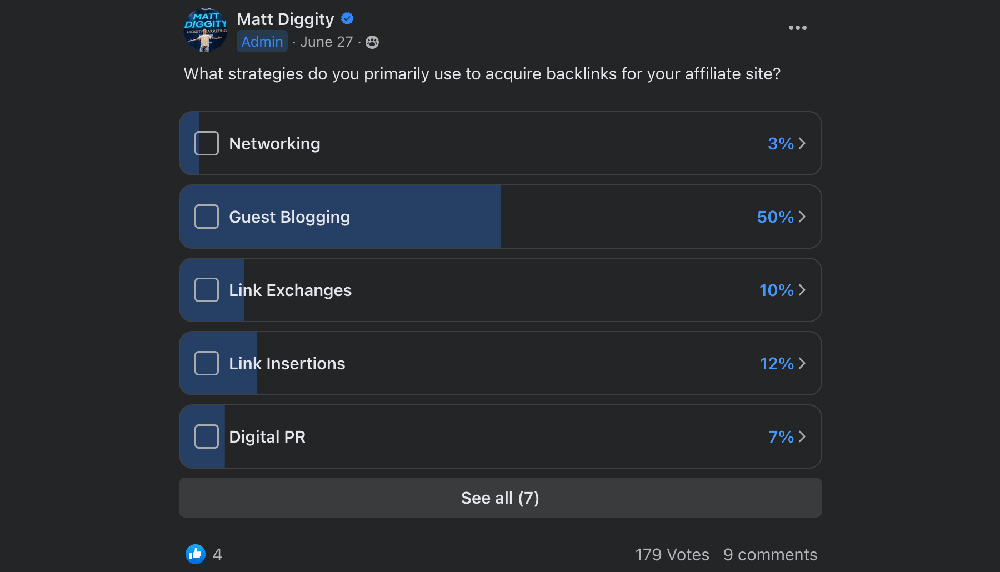
Strategic guest blogging is another powerful link building strategy. It involves the practice of writing and publishing guest blog posts on relevant and authoritative websites to establish high-quality backlinks to your own website.
Think of it as being invited to speak at an industry event – not only do you get to share your expertise, but you also get to tap into a new audience, thus expanding your reach and building backlinks. Some benefits of strategic guest blogging include:
- Establishing yourself as an authority in your industry
- Increasing your website’s visibility and traffic
- Building relationships with other bloggers and influencers
- Improving your website’s search engine rankings
By implementing a strategic guest blogging strategy, you can boost your website’s online presence and drive more organic traffic to your site.
Guest blogging offers numerous benefits, from heightened visibility to improved brand recognition and credibility. And with the right strategies, such as ensuring that backlinks are sourced from reputable and relevant websites and incorporating your website’s backlinks within the guest posts you produce, you can maximise the effectiveness of your guest blogging efforts.
The Art Of Broken Link Building

Envision this scenario: while browsing a website, an intriguing link catches your eye. You click on it only to be greeted by a 404 error page. Quite frustrating, isn’t it? This is where broken link building comes into play.
Broken link building is a strategy that involves finding broken links on other websites and offering your own content as a replacement. It’s like finding a broken bridge and offering to repair it. When you fix the broken link, you improve the user experience, and in return, you get a backlink to your site. It’s a win-win situation. You acquire a backlink and the website owner improves their user experience.
Leveraging Internal Links For SEO Advantage
Despite external backlinks often taking center stage in link building discussions, internal links possess their distinct influence. These are links that connect different pages on your own website, creating a web of interconnected content.
Internal links play a crucial role in improving user experience on a website by facilitating seamless navigation between relevant pages, thereby simplifying the process of finding related content. They also play a significant role in shaping your site’s structure and hierarchy, making it easier for search engines to crawl and index your pages.
Simply put, a well-planned internal linking strategy can enhance your SEO efforts and provide a better experience for your visitors.
Advanced Link Building Tips & Tricks
As your proficiency in link building grows, you’ll aspire to elevate your strategies. Let’s delve into two advanced tactics that can give your link building efforts a significant boost: link reclamation and anchor text optimisation.
Utilising Link Reclamation
Link reclamation is like a treasure hunt for lost backlinks. Sometimes, you may lose backlinks due to various reasons – the linking page may be removed, the link could be broken, or the website owner might have just decided to remove your link.
Link reclamation involves identifying these lost backlinks and reaching out to the website owners to reinstate your link. It’s like finding a lost treasure and restoring it to its rightful place. By reclaiming lost backlinks, you can regain valuable link equity and boost your SEO performance.
Anchor Text Optimisation
Anchor text is the visible, clickable text in a hyperlink. Think of it as a signpost that tells users and search engines what to expect when they follow the link. Optimising your anchor text can improve your SEO performance and enhance the user experience.
Anchor text provides context to search engines and users, helping them understand the content of the linked page. By using descriptive and relevant anchor text, you can provide clear signals to search engines about your content and improve your search engine rankings. However, it’s crucial to avoid over-optimisation and ensure your anchor text appears natural and relevant to the content.
Evaluating Your Link Profile
Much like an architect scrutinising blueprints or a chef sampling a dish before serving, evaluating your link profile is paramount. A link profile is the total of all the backlinks directing to your website, encompassing the quantity, quality and diversity of these links.
Evaluating your link profile helps you identify strengths, uncover weaknesses, and make informed decisions for improvement. By using backlink checker tools like Ahrefs or SEMrush, you can collect crucial data, assess link quality and examine anchor text distribution. Regularly checking your link profile ensures you stay on top of your link building efforts and adapt your strategy as needed.
Essential Link Building Tools

In the sphere of link building, possessing the appropriate tools can be a game-changer. From finding link building opportunities to tracking your progress, these tools can streamline your process and optimise your efforts.
Backlink analysis tools like Moz, Ahrefs, and SEMrush can offer valuable insights into link quantity, quality and anchor text. Google Search Console is also a great source for insights and it’s free.
Meanwhile, outreach tools like MailTag and various email outreach tools such as SEMrush’s outreach tool can help you conduct link outreach and track email communications effectively. With these tools at your disposal, you can navigate the complex world of link building with greater ease and efficiency.
Avoiding Spammy Link Building Techniques
Despite link building being a potent SEO strategy, it’s vital to steer clear of certain pitfalls. Just as a skilled sailor knows to avoid treacherous waters, a savvy SEO practitioner should steer clear of spammy link building techniques.
Spammy link building techniques, such as forum spamming and comment spam, are unethical practices that can harm your website’s reputation and lead to penalties from search engines. In addition, purchasing links can have a detrimental impact on SEO ranking due to its association with unethical SEO practices.
To navigate these pitfalls, it’s essential to focus on building high-quality backlinks from reputable sources and to adhere to SEO best practices.
Maximising Referral Traffic Through Strategic Link Placement
Similar to how a billboard in a bustling area draws more attention, situating links on high-traffic websites can boost your referral traffic and attract links. Referral traffic refers to visitors who arrive at your site by clicking a link on another website.
Strategic link placement involves placing your links on high-traffic websites, directories and review websites to maximise exposure and attract more visitors to your site. By identifying high-traffic websites and securing valuable link placements, you can increase your brand exposure and attract additional backlinks.
It’s like having your business advertised on a popular TV show – the more viewers it has, the more exposure your business gets.
The Synergy Between On-Page SEO & Link Building
On-page SEO and link building are two integral facets of the same entity. Both are essential elements of a successful SEO strategy, and when combined, they can create a synergistic effect, improving your website’s overall search engine performance.
On-page SEO encompasses the optimisation of content elements on a webpage, including the title, headers, and keywords, while link building is centered on obtaining external hyperlinks to your website. Both on-page SEO and link building play crucial roles in enhancing search engine rankings, although their significance may differ based on individual strengths and weaknesses.
By integrating robust on-page SEO strategies with effective link building techniques, you can significantly enhance your website’s visibility and organic traffic.
Building Links Beyond Your Website: External Opportunities
Link building extends beyond the perimeters of your website. In fact, there are numerous opportunities beyond your website where you can build links and increase your digital presence.
Social media platforms and online communities are fertile grounds for link building. By actively participating in these platforms and engaging with influencers, brands and bloggers, you can establish authority and identify potential link building prospects. Additionally, focusing on authoritative sites with a significant number of external links can enhance your brand exposure and attract additional backlinks.
Adapting To Algorithm Updates: Future-Proofing Your Link Building
The ever-changing digital landscape sees search engines routinely updating their algorithms such as the Google Penguin update way back in 2012, Google Fred update in 2017 and more recently Google’s September 2023 Helpful Content Update. To stay ahead of the curve, it’s crucial to adapt your link building strategies to these updates and future-proof your efforts.
Google, for instance, rolled out an update in December 2022, aiming to neutralise spammy links. In light of such changes, high-quality link building strategies need to adjust by:
- Conducting audits of existing links
- Prioritising quality over quantity
- Establishing relationships and outreach
- Continuously monitoring and evaluating outcomes.
By keeping abreast of the latest updates and trends, and focusing on creating high-quality content and backlinks, you can future-proof your link building strategy.
Summary
In the vast ocean of SEO, link building is a powerful current that can guide your website to the shores of success. With a strategic approach, a focus on high-quality backlinks, and a keen eye on the latest algorithm updates, you can navigate the intricate waters of link building and propel your website’s visibility and authority.
Whether you’re just dipping your toes into the world of SEO or you’re a seasoned sailor charting new routes, the techniques and strategies laid out in this guide will help you navigate your journey. So, set sail, and may the winds of SEO success be ever in your favor!
Frequently Asked Questions
Is link building good for SEO?
Yes, link building is still relevant to SEO but quality is more important than quantity in today’s SEO landscape.
How do I create a link for SEO?
To create a link for SEO, use proper internal link structure with keyword-rich anchor text in all internal links, and make sure the internal links are linking to relevant content. Vary up the internal links you use, rather than always sending readers to the same few pages.
What is a linking strategy for SEO?
A good linking strategy for SEO involves organising content into topic categories, using internal and deep links to improve user navigation and ensuring anchor text in internal links. This helps Google determine a page’s topic better and which pages on the site are the most important.
What makes a good backlink?
A good backlink comes from an authoritative and relevant source, contains descriptive anchor text and is placed within the main content of a webpage for maximum impact. These factors contribute to its quality and effectiveness.
What is the difference between on-page SEO and link building?
The main difference between on-page SEO and link building is that on-page SEO focuses on webpage optimisation, while link building is about acquiring inbound links from other websites to improve search engine rankings.
What are effective strategies for link building in SEO?
Effective strategies for link building in SEO include creating high-quality, shareable content that naturally attracts links, engaging in strategic guest blogging on reputable sites, participating in industry forums and communities, leveraging social media to share content and build relationships, conducting broken link building by replacing dead links with your own relevant content, and collaborating with influencers to gain backlinks. Additionally, using tools like backlink checkers can help identify opportunities for link acquisition, while ensuring a diverse link profile and avoiding spammy tactics are fundamental to a successful link building strategy.



